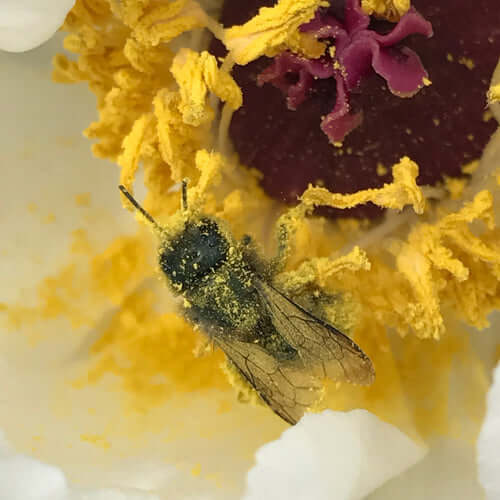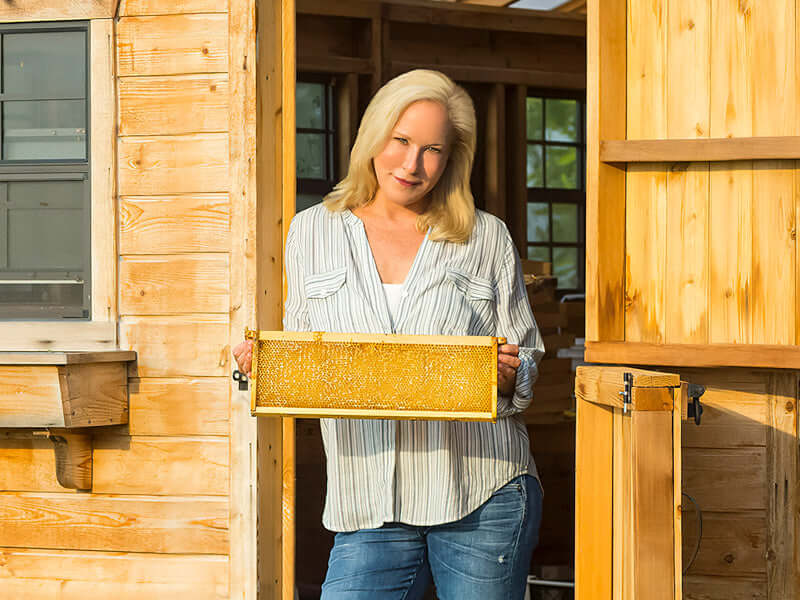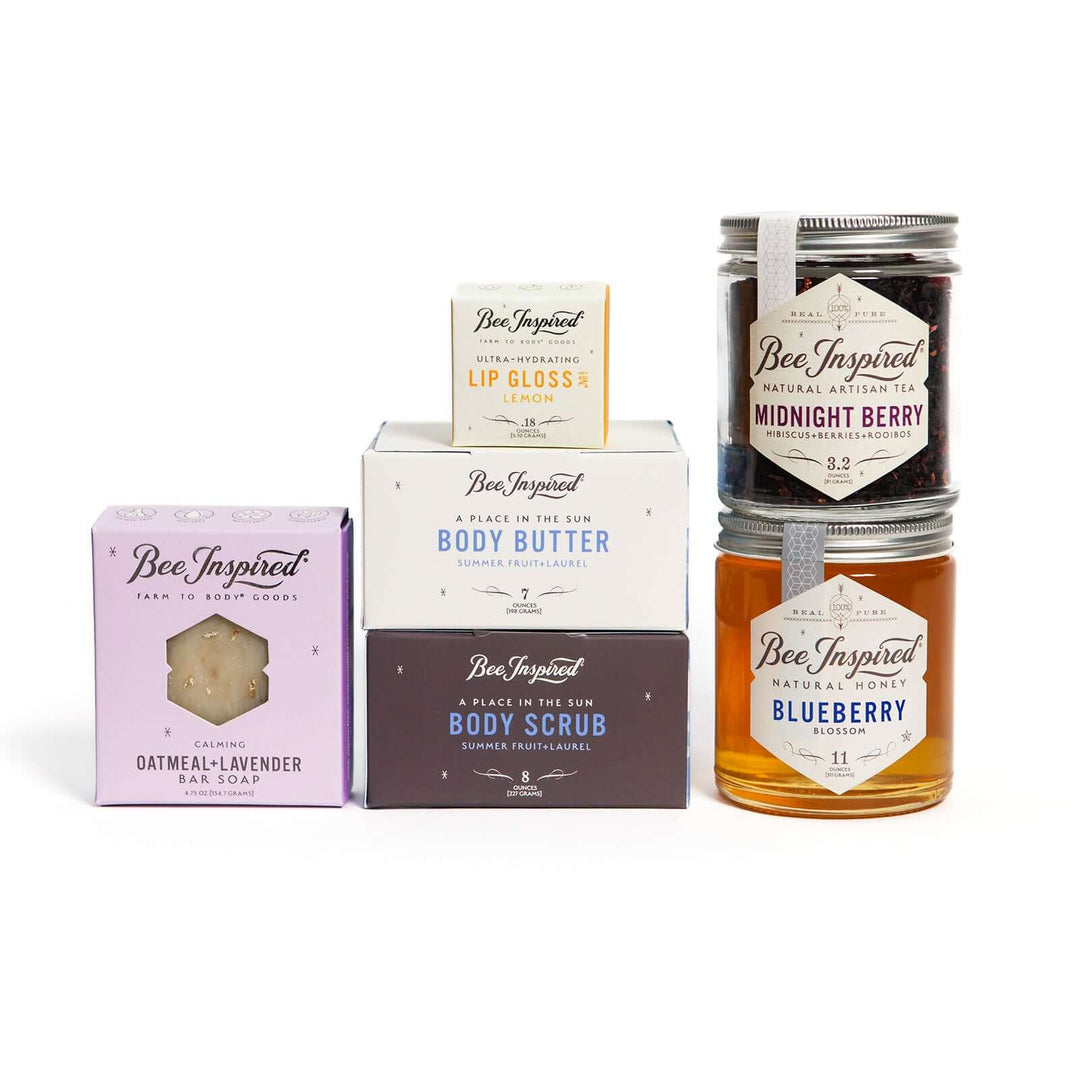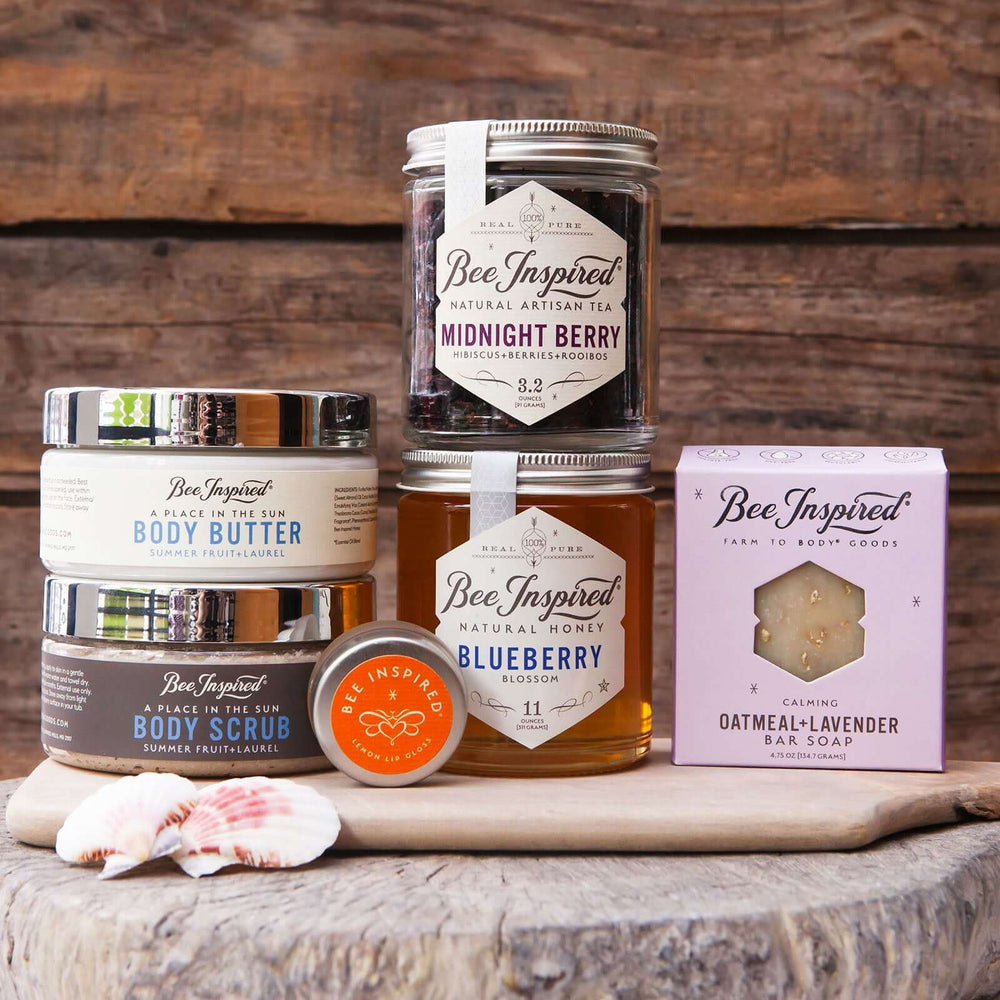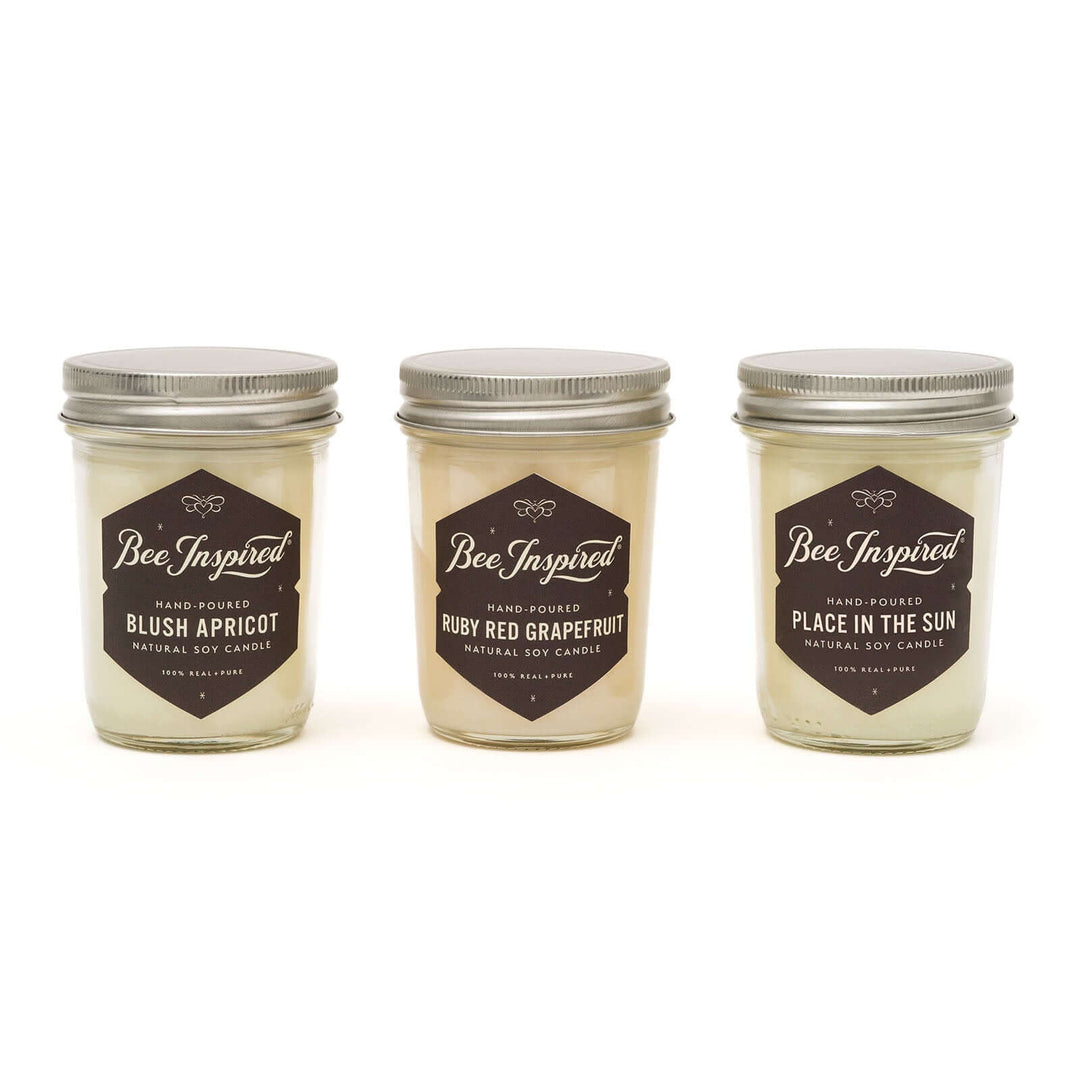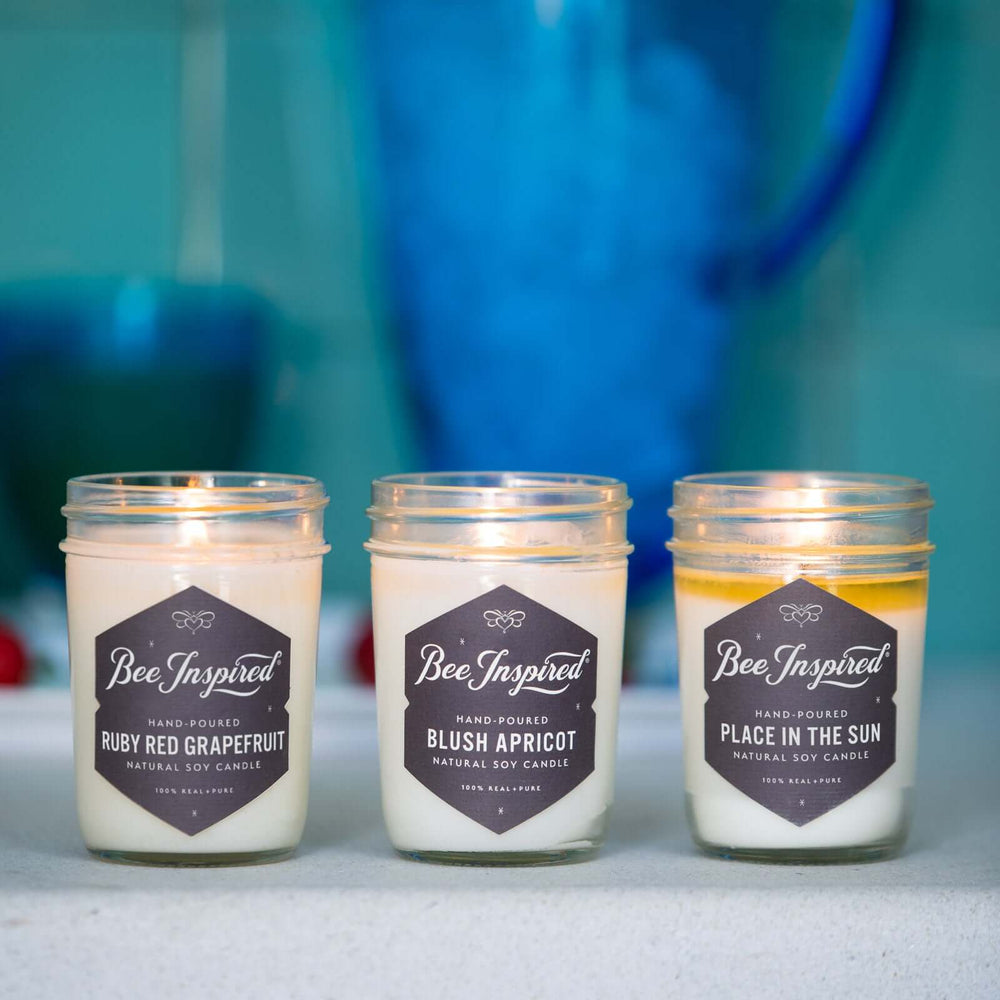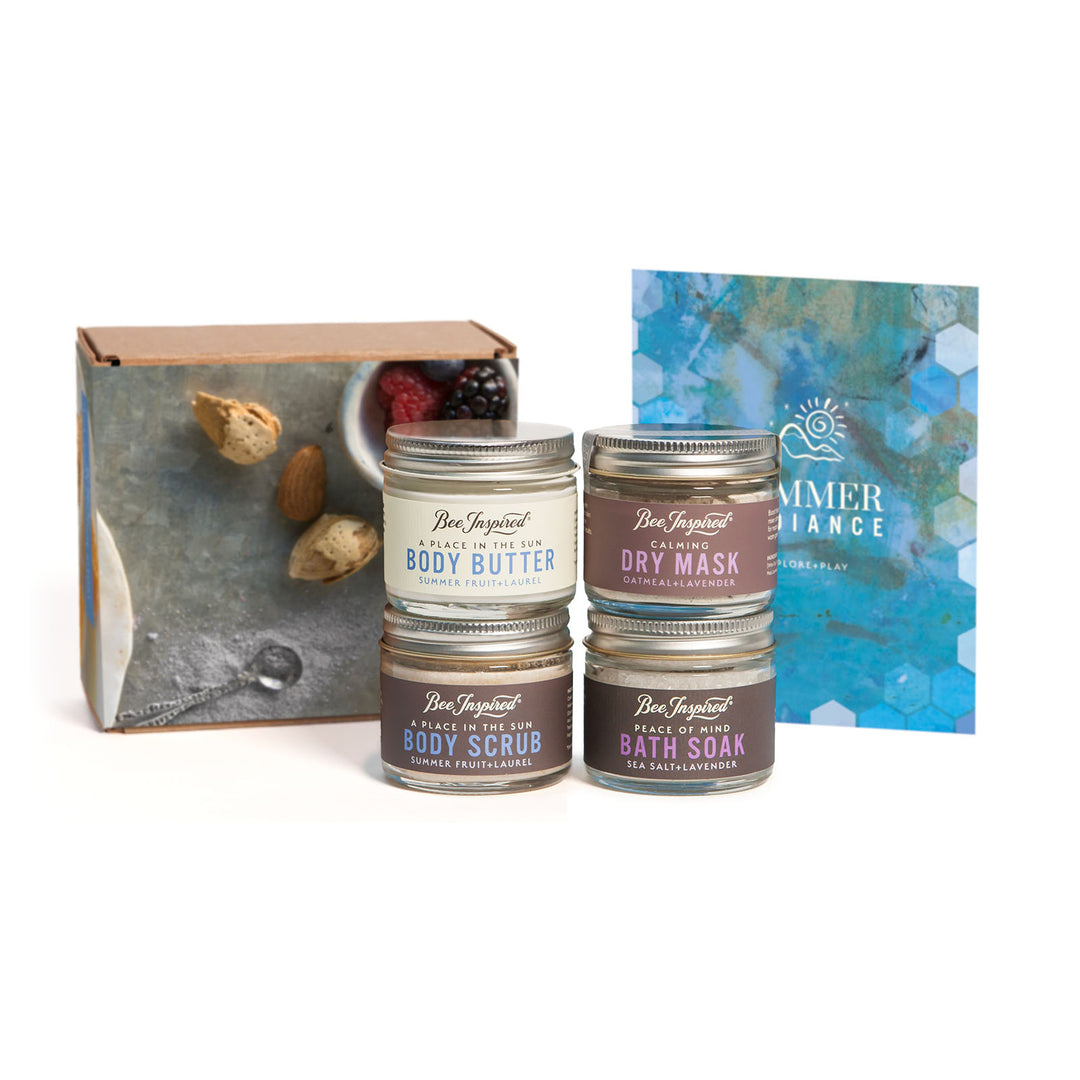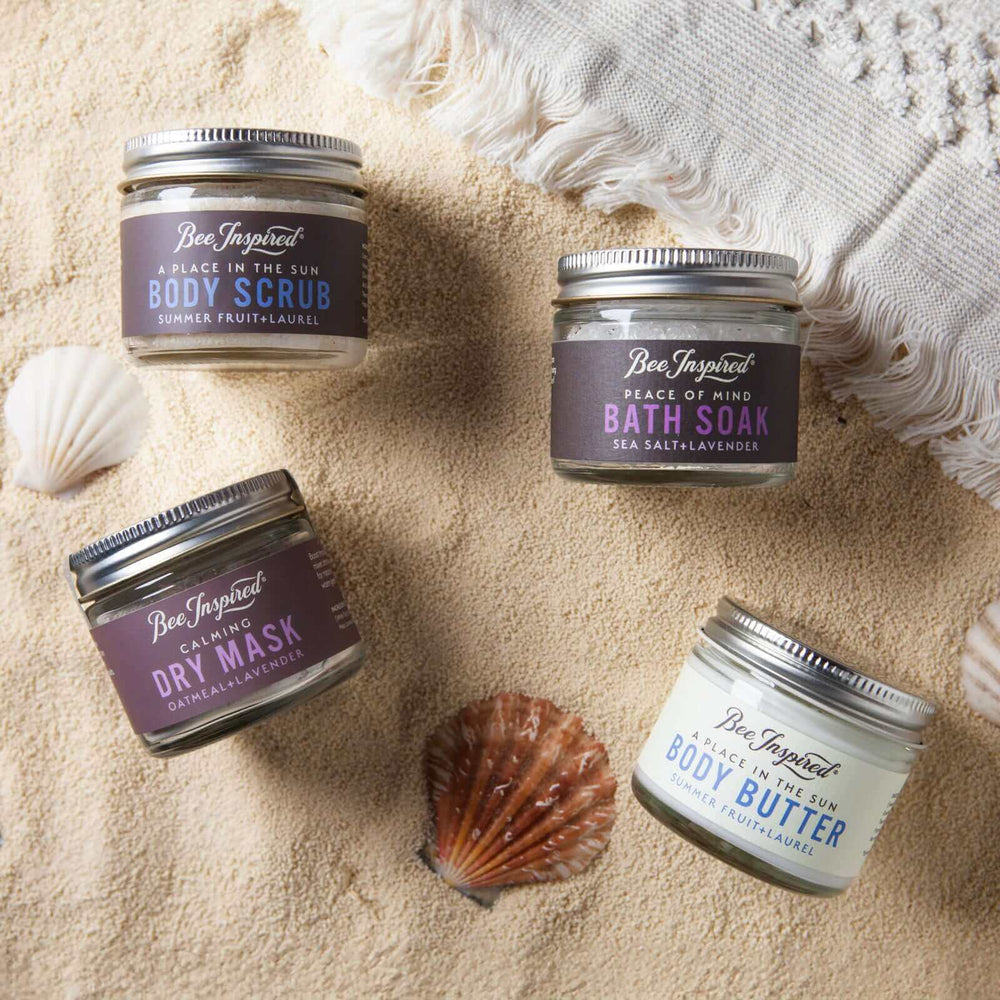Bee pollen is one of nature's most fascinating bee products, collected by honeybees as they visit flowers during pollination. This tiny golden granule has been used for centuries in various cultures and is gaining renewed interest as people look for natural, nutrient-rich foods to support their wellness routines.
Our bees collect pollen and honey in their hives
If you're curious about what bee pollen is, how it's made, and what the research says about its nutritional profile, you're in the right place. Let's explore this remarkable bee product and how you can incorporate it into your daily life.
Understanding Bee Pollen: Nature's Nutritional Package
Bee pollen is created when honeybees collect pollen from flowering plants during pollination. Mixed with nectar and bee secretions, this becomes "bee bread," which serves as the hive's primary protein source. When beekeepers use special pollen traps at hive entrances, they can collect small amounts without harming the colony.
The composition of bee pollen varies significantly based on:
- The types of flowers bees visit
- The season of collection
- Geographic location and climate
- Local plant diversity
This variation means that bee pollen from different sources offers different nutritional profiles, making local bee pollen particularly interesting for those who want to support nearby ecosystems.

Our Raw Honeycomb naturally contains bee pollen. Discover how honeycomb is made and its fascinating structure
The Nutritional Profile of Bee Pollen
Bee pollen has earned attention for its impressive nutritional density. While exact composition varies by source, bee pollen generally contains:
Macronutrients
- Proteins and amino acids (including essential amino acids)
- Carbohydrates
- Lipids and fatty acids
- Dietary fiber
Micronutrients
- B vitamins (B1, B2, B6)
- Vitamin C
- Vitamin D
- Vitamin E
- Vitamin A (beta-carotene)
Minerals
- Potassium
- Magnesium
- Calcium
- Zinc
- Iron
Beneficial Compounds
- Flavonoids
- Polyphenols
- Carotenoids
- Plant enzymes

All of our Raw Honey varieties naturally contain bee pollen, regardless of the type of honey
What Research Says About Bee Pollen
Scientific studies have explored bee pollen's nutritional properties and composition. Research has identified that bee pollen contains various bioactive compounds, though it's important to note that many studies have been conducted in laboratories or with animals rather than humans.
Antioxidant Content
Laboratory analysis has shown that bee pollen contains antioxidant compounds such as flavonoids, carotenoids, and phenolic acids. These compounds are found in many plant-based foods and are part of a nutritious diet.
Protein and Amino Acids
Bee pollen contains proteins and amino acids that are building blocks for many bodily functions. The amino acid composition varies based on the plant sources visited by bees.
Vitamin and Mineral Content
Depending on the botanical source, bee pollen can provide various vitamins and minerals that contribute to overall nutrition when consumed as part of a balanced diet.

Our Allergy Support Honey Set contains carefully selected honey varieties from different floral sources
Why People Choose Bee Pollen
People incorporate bee pollen into their diets for various reasons:
- As a Nutrient-Dense Food: With its diverse nutritional profile, bee pollen appeals to those seeking to add more plant-based nutrients to their diet.
- For Local Allergy Support: Some people consume local bee pollen for seasonal allergy support, based on the theory that exposure to local pollen may help the body become familiar with allergens. However, this approach should only be taken under guidance from a healthcare provider, especially for those with known pollen allergies.
- Supporting Local Beekeepers: Purchasing bee pollen from local beekeepers helps support sustainable beekeeping practices and local ecosystems.
- As a Whole Food Supplement: Many wellness enthusiasts appreciate bee pollen as a minimally processed, whole food option to complement their nutrition.

Our Raw Honey Sticks provide a convenient way to enjoy honey and naturally occurring bee pollen on the go
Important Considerations Before Taking Bee Pollen
While bee pollen is a natural food, there are important safety considerations:
Allergic Reactions
Bee pollen can cause allergic reactions in some individuals, particularly those with:
- Pollen allergies or hay fever
- Bee sting allergies
- Sensitivity to bee products
Reactions can range from mild (itching, rash) to severe (difficulty breathing, anaphylaxis). If you have any allergies to pollen or bee products, consult a healthcare professional before consuming bee pollen.
Medication Interactions
Bee pollen may interact with certain medications, including:
- Blood thinners (such as warfarin)
- Anticoagulants
Always discuss bee pollen consumption with your healthcare provider if you're taking any medications.
Special Populations
- Pregnant or nursing women: Limited research exists on bee pollen safety during pregnancy and lactation. Consult your healthcare provider.
- Children under age 2: Bee products should be avoided for very young children.
- Those with chronic health conditions: Speak with your doctor before adding bee pollen to your diet.
Quality and Contamination Concerns
Research has identified that bee pollen can sometimes contain:
- Mycotoxins from mold growth
- Pesticide residues (though typically at low levels)
- Bacterial contamination if not properly handled
Always purchase bee pollen from reputable sources who follow good manufacturing and storage practices.

Our Dry Face Masks contain honey for natural skin nourishment
How to Take Bee Pollen
Bee pollen comes in several convenient forms:
Forms Available
- Granules: The most natural form, with a slightly sweet, floral taste
- Powders: Easily mixed into smoothies and foods
- Capsules: A convenient option for those who prefer not to taste it
Ways to Use Bee Pollen
- Add granules to smoothies or yogurt
- Sprinkle on cereal or oatmeal
- Mix into artisanal tea or warm beverages
- Blend into energy balls or homemade snacks
- Incorporate into honey-based recipes
Recommended Approach
Start small:: Begin with a tiny amount (a few granules) to test for any allergic reactions, especially if you have seasonal allergies.
Gradual increase: If tolerated well, you can gradually increase the amount over several days.
Typical consumption: Many people consume 1-2 teaspoons of bee pollen daily as part of their routine, though individual needs vary.
Timing: Some prefer taking bee pollen in the morning or before meals.

Our Original Honey Body Scrub is made from pure crystallized honey
The Value of Local Bee Pollen
Choosing local bee pollen offers several advantages:
- Freshness: Local bee pollen is often fresher than imported varieties, having traveled shorter distances from hive to consumer.
- Unique Composition: Local bee pollen reflects the biodiversity of your area's plant life, offering a nutritional profile unique to your region.
- Supporting Conservation: Purchasing from local beekeepers supports bee populations and pollinator health in your community.
- Sustainable Practices: Local beekeepers often employ sustainable, bee-friendly practices that prioritize colony health.
- Reduced Environmental Impact: Buying local reduces transportation-related environmental impact.
Our Commitment to Sustainable Beekeeping
At Bee Inspired Goods, we prioritize:
- Bee health and welfare above all
- Minimal intervention in hive activities
- No harmful pesticides near our hives
- Supporting local ecosystems through pollination
- Ethical harvesting practices

Our Honey Lollipops made with raw honey provide a sweet way to enjoy honey's natural properties
Supporting Local Beekeepers and Sustainable Practices
Supporting local beekeepers contributes to the health of local ecosystems and ensures high-quality bee products.
Where Bee Pollen Appears in Honey Products
Many people don't realize that raw honey naturally contains bee pollen. When honey is minimally filtered, these tiny golden granules remain suspended throughout, adding their nutritional benefits to every spoonful.
All of our Eastern Shore raw honey varieties contain naturally occurring bee pollen because we practice minimal filtration. This means you're getting bee pollen's nutritional benefits whenever you enjoy our:
- Raw Honeycomb
- Raw Honey Sticks
- All raw honey varieties

Try honey with our Artisanal Loose-Leaf Tea for a delightful wellness beverage
Incorporating bee pollen into your daily wellness routine is simple and flexible. Here are some ideas:
Morning Routine
- Add to your morning smoothie
- Sprinkle on breakfast cereal
- Mix into yogurt or oatmeal
- Stir into herbal tea
Energy Support
- Take before workouts for natural carbohydrates
- Pack honey sticks with bee pollen for afternoon energy
- Add to pre-workout snacks
Culinary Uses
- Incorporate into homemade energy bars
- Use in salad dressings
- Add to baked goods
- Mix into nut butters

Our Plastic-Free Honey Lip Balm uses natural oils and beeswax for lip care
Understanding Quality in Bee Pollen
Not all bee pollen is created equal. Here's what to look for:
Quality Indicators
- Bright, varied colors (yellow, orange, brown tones)
- Slight floral aroma
- Dry but slightly sticky texture
- No musty or off odors
Source Matters
- Know where your bee pollen comes from
- Choose producers who test for contaminants
- Look for proper storage (cool, dry conditions)
- Support transparent beekeeping operations
Storage at Home
- Keep in a cool, dry place
- Some people refrigerate or freeze for extended freshness
- Use within 1-2 years of purchase
- Discard if you notice any moldy smell or appearance
Bee Pollen vs. Other Bee Products
Understanding the difference between bee products helps you choose what's right for you:
- Bee Pollen: Collected flower pollen packed by bees, rich in proteins, vitamins, and minerals
- Honey: Nectar transformed by bees, containing natural sugars, enzymes, and trace amounts of pollen
- Royal Jelly: A secretion fed to queen bees, rich in proteins and fatty acids
- Propolis: A resinous mixture bees use to seal the hive, studied for its plant compounds
- Beeswax: Secreted by bees to build honeycomb, used in natural skincare and body care
Each bee product has its unique composition and traditional uses, though scientific research on human health applications varies by product.
Common Questions About Bee Pollen
Can children eat bee pollen?
Children over age 2 may consume bee pollen in small amounts, but always start with a tiny portion to check for allergies. Consult your pediatrician first.
Does bee pollen need to be refrigerated?
Not necessarily, but storing it in a cool, dry place or refrigerating can help maintain freshness longer.
How long does bee pollen last?
Properly stored bee pollen typically remains fresh for 1-2 years. Always check for any signs of spoilage before consuming.
Is bee pollen the same as honey?
No. While honey naturally contains small amounts of bee pollen, they are different products with different nutritional profiles. Honey is primarily natural sugars with enzymes and trace nutrients, while bee pollen is primarily protein-rich.
Should I buy local bee pollen?
Many people prefer local bee pollen because it's fresher, supports local ecosystems, and reflects the local plant diversity. Learn more about finding local honey and bee products near you.

Honey is excellent for natural skincare applications
Supporting Bee Health Through Your Choices
Every time you purchase bee products from responsible beekeepers, you're supporting:
- Pollinator Conservation: Healthy bee populations essential for food production
- Biodiversity: Diverse ecosystems that support varied plant life
- Sustainable Agriculture: Farming practices that work with nature, not against it
- Local Economies: Small-scale beekeepers who care for their colonies year-round
- Environmental Stewardship: Practices that protect habitats and reduce chemical use
At Bee Inspired Goods, we're committed to ethical beekeeping that puts bee welfare first. Our colonies thrive on diverse Eastern Shore forage, producing honey and bee pollen that reflects our region's natural beauty.
Your Journey with Bee Pollen
Whether you're exploring bee pollen for its nutritional density, supporting local agriculture, or simply curious about this fascinating bee product, starting with small amounts and quality sources is key.
Remember:
- Always start with a tiny amount to test for allergies
- Choose reputable sources with proper handling and storage
- Consult healthcare providers if you have allergies or take medications
- Support local, sustainable beekeepers when possible
- Incorporate as part of a varied, balanced diet
Shop Bee Inspired Products
Discover our collection of raw honey products that naturally contain bee pollen:
Frequently Asked Questions
What is bee pollen?
Bee pollen is flower pollen collected by honeybees, mixed with nectar and bee secretions. It serves as the primary protein source for the hive and contains various nutrients including proteins, vitamins, minerals, and bioactive compounds.
Is bee pollen safe to eat?
For most people, bee pollen is safe when consumed in appropriate amounts. However, individuals with pollen allergies, bee sting allergies, or certain medical conditions should consult a healthcare provider before consuming bee pollen.
How should I take bee pollen?
Start with a very small amount (a few granules) to test for allergic reactions. If tolerated, you can gradually increase to 1-2 teaspoons daily. Bee pollen can be added to smoothies, yogurt, cereal, or taken directly.
Can bee pollen cause allergic reactions?
Yes. Bee pollen can cause allergic reactions ranging from mild (itching, rash) to severe (difficulty breathing, anaphylaxis), especially in people with pollen allergies or bee sting allergies. Always start with a tiny amount and stop immediately if you experience any adverse reactions.
Why should I buy local bee pollen?
Local bee pollen is typically fresher, reflects your region's plant diversity, supports local beekeepers and ecosystems, and may contain pollen from plants in your area. It's also more sustainable due to reduced transportation.
Does raw honey contain bee pollen?
Yes! Raw, minimally filtered honey naturally contains bee pollen. All of our raw honey varieties include naturally occurring bee pollen.
Disclaimer: These statements have not been evaluated by the Food and Drug Administration. Bee pollen is not intended to diagnose, treat, cure, or prevent any disease. Information provided is for educational purposes only and should not be considered medical advice. Always consult with a qualified healthcare provider before making changes to your diet, especially if you have allergies, medical conditions, or take medications.





